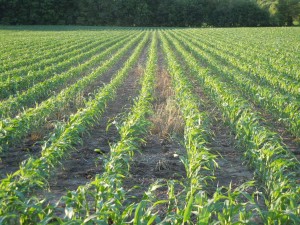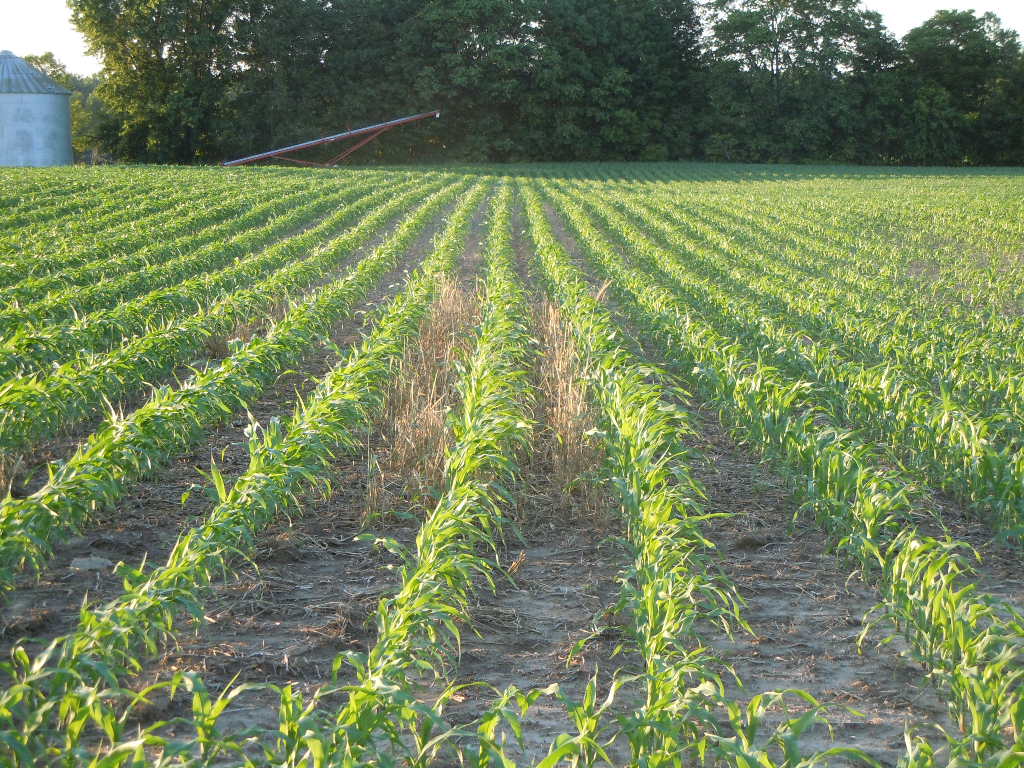Cover Crop Problems?

I often hear folks saying that farmers should be careful planting into cover crops. There is fear that:
- “there will be slugs.”
- you “can’t adequately kill the cover crops.”
- you can’t depend on getting a “normal” stand.
Well, here we are after one of the wettest Springs in the Eastern Corn Belt history and we have had challenges getting the crop in. But getting a good stand planting into cover crops has NOT seemed to be a problem.
Cover Crop Testing

In the Fall of 2010 I conducted a test at Robison Farms near Greenwood, Indiana. My brother Don and I simulated aerial application of 9 different cover crop entries (mixes and straight species). While we had very little rain in the Fall until late October, we had excellent winter and spring growth on most of the non-irrigated plots. We had the same plot entries in a different part of the field that received 3″ of irrigation (weekly applications of 0.5″ rain for 6 weeks) and all of the cover crops did very well in those plots.
Stand Establishment Results

Stand establishment results were very positive towards no-till planting into cover crops as we look at the Robison Farms results. My take home is that in an exceptionally wet year we did not lose any stand because of the cover crops. In most areas we actually held steady or improved (slightly) compared to the no-till without cover crops. Slugs? None. Cannot get them killed? I’d say better than 99% kill rate…and less broadleaf weeds in the cover crop plots.
This is one location in one year…one very wet, very challenging year. Many farmers have told me how their stands were at least as good in their cover crop fields compared to having no cover crops…and some have some great stories about how they actually planted earlier in their cover crop fields than they could in their non-cover crop fields.
What was your experience this year? I’d love to hear from you.
Here is a video that shows what my brother Don and I observed.
